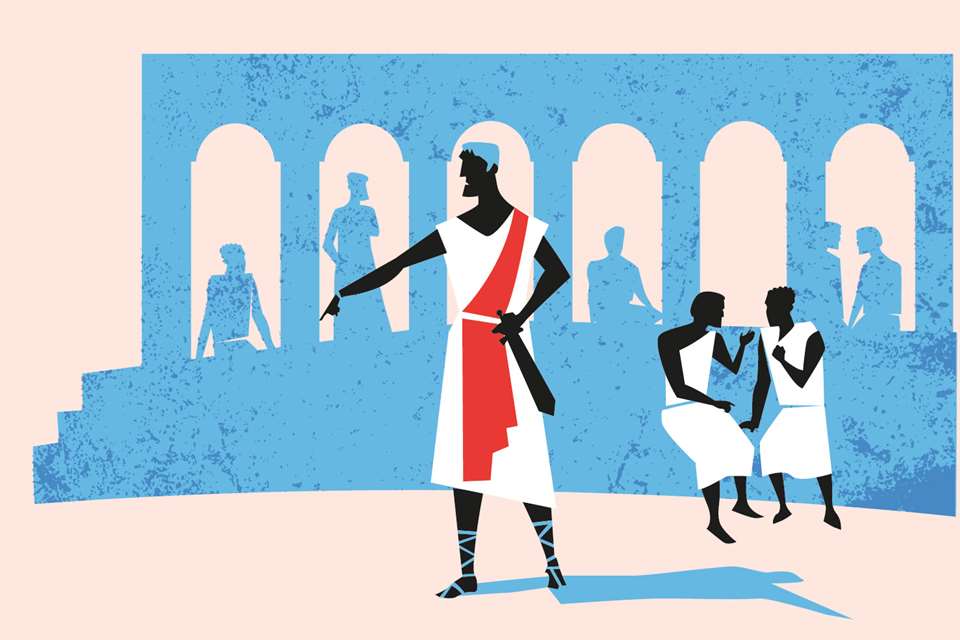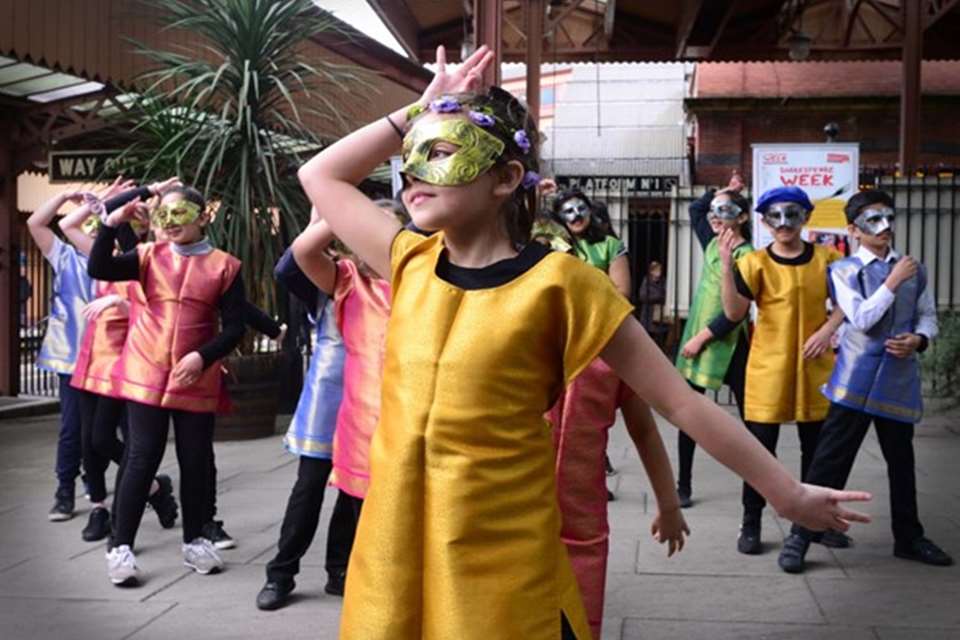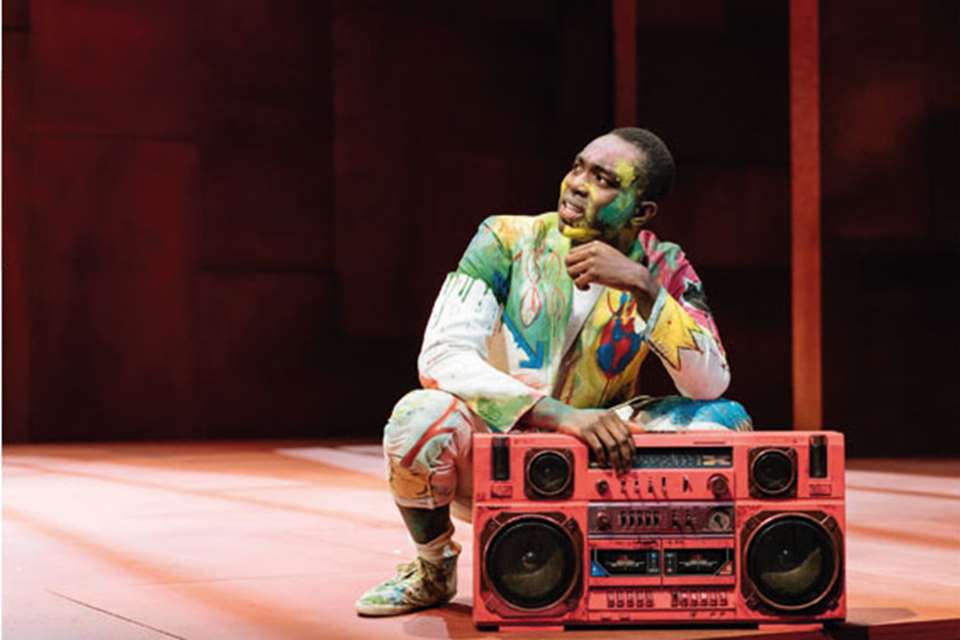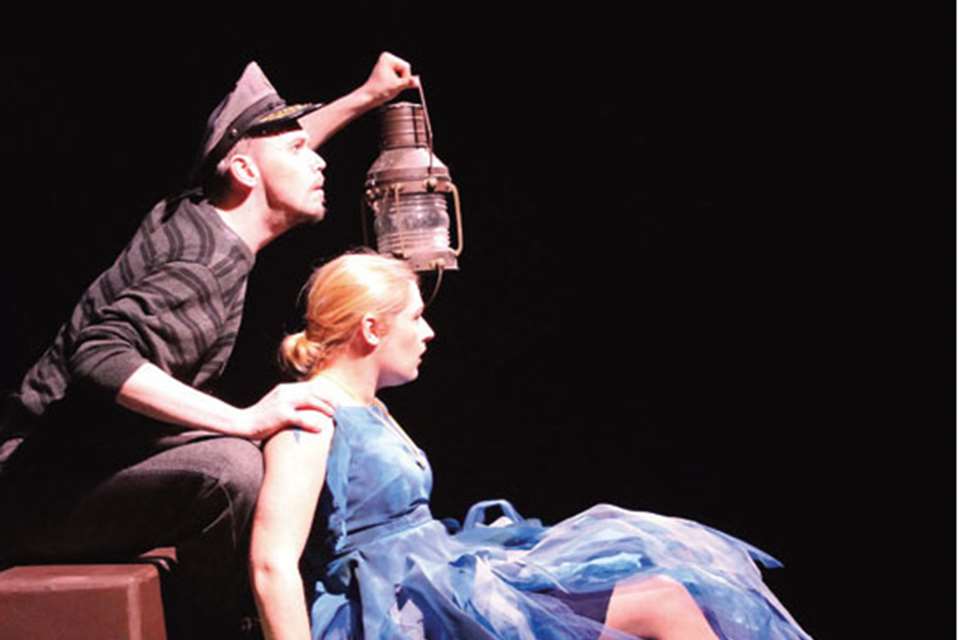Shakespeare and Race Festival: Changing the conversation
Lydia Valentine
Thursday, December 1, 2022
With the return of the Globe's Shakespeare and Race Festival, researcher Lydia Valentine explains why we need to ask questions about the way we approach the discussions of racial difference in Shakespeare's texts.
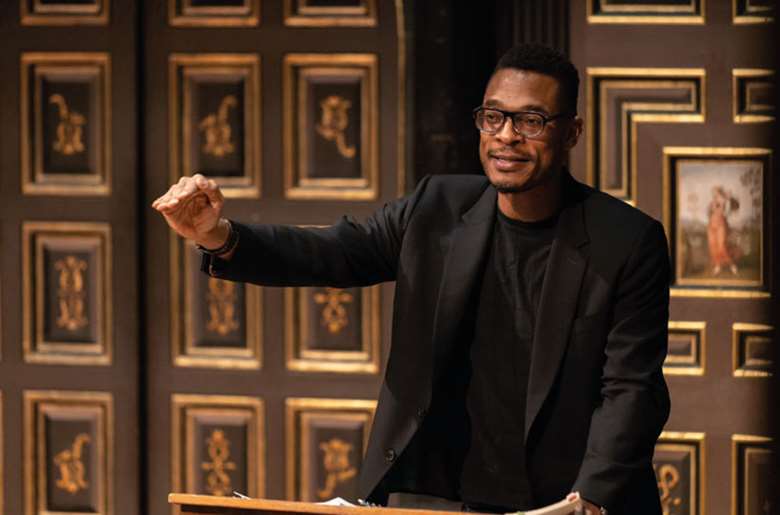
Shaekspeare's Globe
In 2018, Shakespeare's Globe offered the first Shakespeare and Race Festival. Conceived and curated by Professor Farah Karim-Cooper, the festival sought to emphasise the important of race to the study and teaching of Shakespeare and to champion scholars, educators, actors, writers and theatre-makers of colour. Now in its fourth year, the Shakespeare and Race Festival includes poetry readings, workshops, roundtables, an academic symposium and the launch of a new collaboration between Shakespeare's Globe and King's College London: the Shakespeare Centre London.
Asking the big questions
The theme of this year's festival was ‘Spoken Word(s)’, inviting us to interrogate the performance of Shakespeare and its relationship to both early modern and 21st-century ideas of race. Shakespeare is often revered as the epitome of white culture, and this has promoted a form of gatekeeping which excludes people of colour. As a result, there are certain questions we need to ask ourselves about our continued engagement with Shakespeare, and particularly in the context of race. How do we empower actors, directors and theatre-makers of colour to work with Shakespeare? How should we approach the racist content of Shakespeare's plays in performance? How is whiteness still dictating the performance and reception of Shakespeare today?
For too long, Shakespeare has been taught through a white-centric lens, which has often led to the perception that race is irrelevant to Shakespeare's texts. As a result, Shakespeare's Globe has faced a lot of criticism for its anti-racist work, including the Anti-Racist Shakespeare webinar series, from those who seem to want to keep Shakespeare and race firmly separated. But race remains an extremely valuable lens through which to read, teach and perform Shakespeare, and this sentiment lies at the heart of the Shakespeare and Race Festival.
How Shakespeare represented racial difference
Though Shakespeare did not use the term race in the same way that we do now, he clearly engaged with race as a way of structuring and viewing the world. This is most evident in his treatment of characters of colour, who are forced to navigate a world structured around whiteness. Linguistically, these characters are often dehumanised: Othello is described as ‘an old black ram’ and a ‘Barbary horse’, Shylock is abusively referred to as a ‘cut-throat dog’, and Aaron is likened to a ‘black ill-favoured fly’ worthy of death. Even when the Duke praises Othello, describing him as ‘far more fair than black’, he is still suggesting that blackness is inferior to whiteness. It is clear, then, that Shakespeare was aware of racial difference and included it in his texts.
Putting it in context
A great first step to discussing Shakespeare and race is to recognise that Shakespeare's world was more diverse than we have previously imagined it. Historians like Imtiaz Habib have done important archival work to show that people of colour lived and worked in early modern England, possibly even visiting the theatre as part of Shakespeare's audience. During Shakespeare's lifetime, England was also increasingly invested in establishing a global empire, following the example of Spain, Portugal and the Ottoman Empire. Furthermore, travel throughout the world inevitably led to cross-cultural encounters between white, English people and other races, cultures and nationalities. Shakespeare's references to ‘spiced Indian air’ or ‘Indian stones’ are just two examples of language which reveals a fascination with the imagined exoticism of foreign countries.
As the Anti-Racist Shakespeare series has demonstrated, discussions of Shakespeare and race should not be restricted only to the plays or poems which feature people of colour. Instead, we should recognise that race is infused in Shakespeare's language. In A Midsummer Night's Dream, Lysander expresses his lack of attraction towards Hermia, a white, Athenian woman, by labelling her an ‘Ethiop’ and ‘tawny tartar’. In the tragedies, the language of blackness is regularly used to express the tragic decline of characters: Macbeth refers to his ‘black and deep desires’ and Hamlet wears an ‘inky cloak’. These examples offer a host of negative associations with blackness, including ugliness, evil and depression, and these associations are not racially neutral.
There is so much to gain by placing Shakespeare and race in conversation with each other. It is only by reckoning with the presence of race in Shakespeare's language that we can challenge the whiteness which has historically dominated the study and performance of Shakespeare. It is only by having these conversations that we can move towards a truly anti-racist Shakespeare.
An exercise to try with studentsA great way to get students thinking about race in Shakespeare is to look at the symbolism of whiteness and blackness in his plays and poems. Make sure that your students are familiar with the different terminology, particularly as ‘fairness’ or ‘fair’ in the early modern period often referred to whiteness, beauty and virtue.After choosing a text to focus on, get your students to analyse quotes which use whiteness or blackness. What do the colours symbolise in this moment? Are there patterns in the symbolism of these colours? It may be useful to split the class into two groups, one focusing on whiteness and one on blackness, and to bring the class together for a discussion to compare their results.



